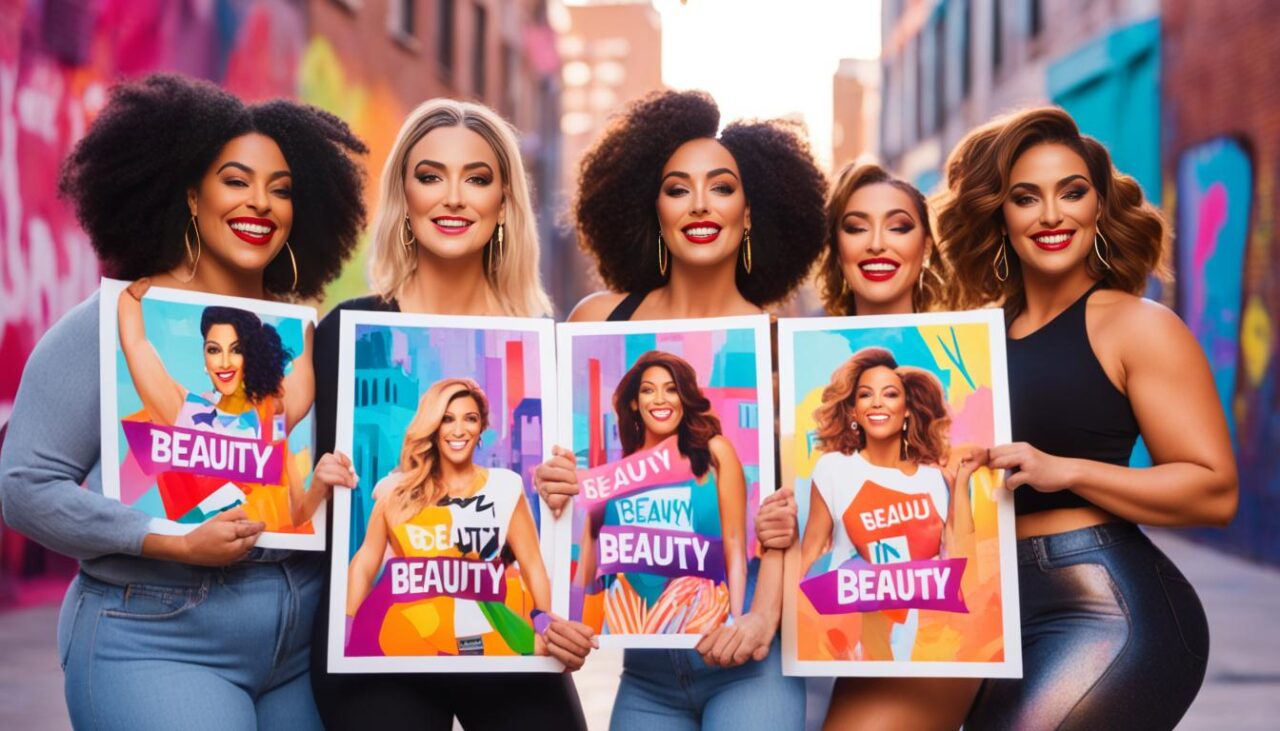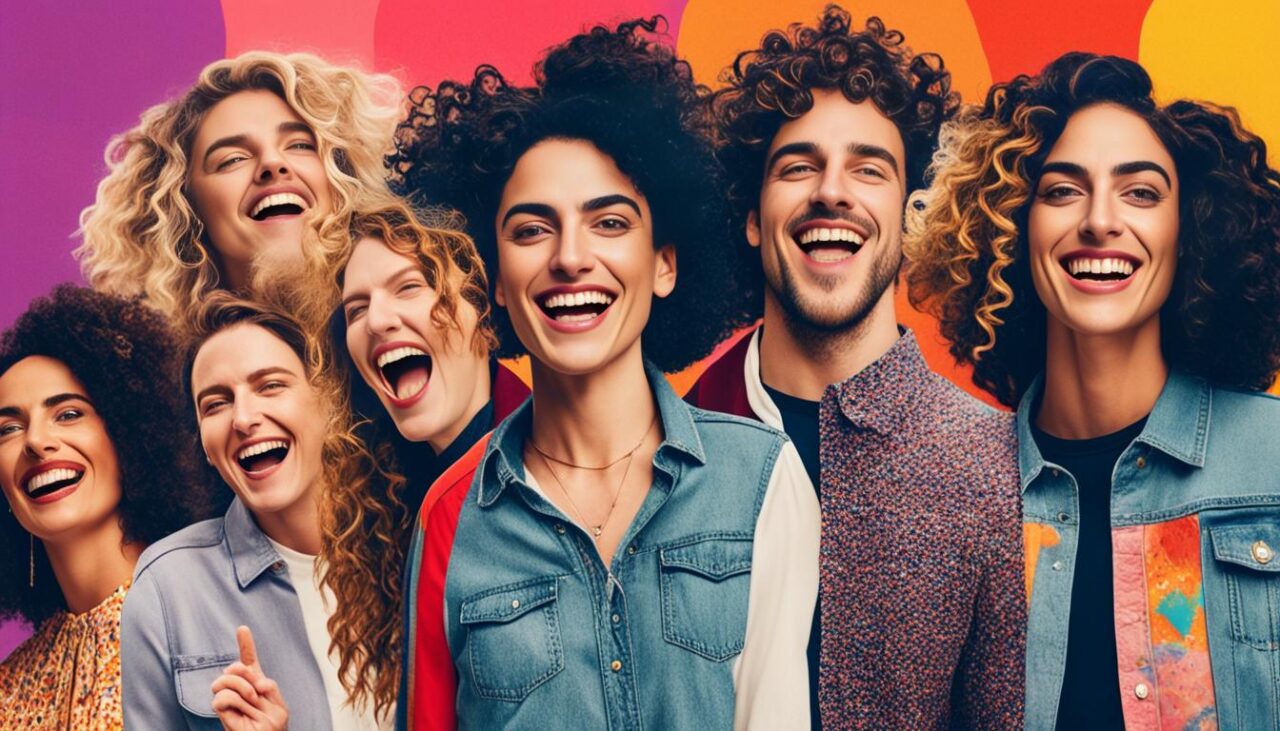The relentless bombardment of cultural standards of beauty by media giants has for decades shaped and reshaped the contours of beauty diversity that are echoed across society. At times, these pervasive images form stringent molds, influencing public perception, while simultaneously constraining the diversity and body positivity in society. As society awakens to the limiting constructs of these ideals, there is a burgeoning realization that representation in media carries the power to either reinforce harmful stereotypes or to liberate and validate the multifaceted human experience.
Though often subtle and unspoken, the media's narrative around beauty functions as an invisible yardstick against which individuals compare themselves, frequently leading to a grapple with self-worth. However, a tide is turning. Voices from all corners of society are starting to speak louder, demanding an inclusive reflection of the world's tapestry within mainstream media. This call is not merely for variety but for an acknowledgment that beauty is a spectrum that defies monolithic portrayals.
Key Takeaways
- Media representation significantly influences societal and cultural standards of beauty.
- Promoting a diverse range of beauty standards encourages inclusivity and body positivity.
- A broad spectrum of beauty representation can challenge and change ingrained perceptions.
- Individual self-image benefits from seeing a wider variety of beauty ideals in media.
- There are profound psychological impacts when people do not see themselves represented in media.
- Advocating for diversity in media paves the way for broader acceptance in society.
The Impact of Media on Beauty Standards
The media has been a formidable force in shaping societal beauty norms, influencing how beauty is perceived and valued in various cultures. An exploration into the realms of advertising, film, television, and burgeoning social platforms reveals a consistent theme: the promotion of specific beauty ideals in media. This targeted representation has been shown to have a profound impact on the collective and individual self-image of consumers.
Historically, the narrow definitions of beauty presented in media outlets have not just mirrored societal expectations but have actively forged them, often marginalizing those who do not fit into this idealized mold. The saturation of these standards has led to a mental watermark of what is considered attractive, impacting the way people see themselves and others. The implications are vast, spanning from the psychological repercussions of internalizing these ideals to the behavioral outcomes of striving to meet them.
The media influence on self-image can be particularly discerning when examining the nuances of how it touches various demographic groups. Young people, already navigating complex social terrains, encounter layered pressures to conform to these beauty ideals. This pressure often leads to a perpetual state of self-assessment and adjustment in the quest to embody what is celebrated on screens and pages.
Under the glossy veneer of these beauty standards lies a greater societal conversation about inclusivity and representation. Surmounting evidence suggests that the pervasiveness of these standards not only affects self-esteem but also molds the very fabric of cultural identity and acceptance.
The urgency for more diverse representation in media is palpable, as discussions around inclusivity and challenging engrained beauty norms become increasingly mainstream. It is a movement toward not just accepting but embracing the multiplicity of beauty in all its forms — one that advocates for an overhaul of the traditional portrayal of beauty to reflect the authentic diversity of humanity.
Defining Diversity in Beauty
The landscape of beauty is shifting, embracing a more inclusive vision that encompasses various facets of human diversity. This change is not only visible in beauty campaigns and products but is also a burgeoning topic within societal discourse. As we progress, an expansive definition of beauty is taking root, one that goes beyond traditional norms to include a wide array of physical attributes, cultural backgrounds, and gender identities.
The Spectrum of Beauty Across Cultures
Beauty is a celebration of differences, with each culture having its own set of standards that reflect its heritage and history. Cultural beauty standards are evolving as societies begin to treasure not just a singular version of beauty, but a mosaic that includes the rich tapestry of global aesthetics. From the sculptural body ideals of ancient civilizations to the ornate beauty practices of indigenous tribes, there is a wealth of diversity to draw inspiration from.

Inclusivity in Skin Tones, Body Types, and Gender
The narrative around beauty has seen a significant shift towards inclusivity, particularly in the representation of various skin tones and body types. The cookie-cutter image of the past is yielding to a world where every shade and shape is celebrated. Recognizing the breadth of humanity's hues and contours is critical in fostering inclusive beauty representation that resonates with a broader audience. Meanwhile, acknowledging gender diversity in media with authentic portrayals is vital for progress, as it leads to a more understanding and empathetic society that values all its members equally.
Representation Matters: Seeing Yourself in Media
When it comes to empowerment and self-esteem, seeing oneself reflected in the media can have a profound impact. Representation in beauty adverts, magazines, films, and television plays a pivotal role in how individuals perceive themselves and their potential. Studies have shown that diverse representation can lead to increased confidence and greater aspirations among those who have been historically marginalized. Whether it's through the breaking of gender stereotypes or embracing the beauty in every skin tone and body shape, diversity in media is more than a trend—it's a movement towards a more inclusive society where everyone can feel beautiful and valued.
Challenging Media's Beauty Ideals
In an era where every scroll through a digital feed can challenge self-perceptions, voices rise in unison for a sea change in beauty standards. We observe a burgeoning resurgence of movements and personal narratives that culminate in a powerful message: beauty is multi-dimensional and universal. This shift is not just surfacing in closed communities or niche platforms; it has taken center stage on global social networks, altering the mainstream narrative and redefining what it means to be beautiful.
The Rise of Body Positivity Movements
Body positivity movements have gone from the fringes to the forefront of consciousness, advocating for the acceptance of all bodies, regardless of size, shape, or appearance. Organizations such as the Body Positive and the National Association to Advance Fat Acceptance have been pivotal, creating spaces for individuals to share their stories and connect over shared experiences. The message is clear: embracing one's body is not just a personal journey, but a collective movement towards emancipation from oppressive beauty standards.
Advocating for Change Through Social Media
Social media advocacy has emerged as a powerful tool in the fight against restrictive beauty ideals. Platforms like Instagram and TikTok are rife with hashtags like #BodyPositivity and #DiverseBeauty, becoming bastions for those seeking to amplify their voices. Influencers and everyday users alike curate content that champions a diverse array of body types, skin colors, and unique features, often inspiring viral trends that defy conventional standards, and fostering a more inclusive beauty community online.

Celebrating Unconventional Beauty
The celebration of unconventional beauty marks a shift towards authenticity and self-love. Figures like Lizzo and Jameela Jamil stand as beacons of this transformation, leveraging their platforms to showcase a diversity of beauty that had long been overlooked or marginalized. Fashion brands such as Savage X Fenty by Rihanna have also been instrumental, launching campaigns that feature models across a spectrum of body types and skin tones, **celebrating diverse beauty** in all its forms and genuinely challenging industry norms.
To redefine beauty is to dismantle age-old myths and to reconstruct a world where everyone can see themselves reflected and celebrated. The body positivity movements, **social media advocacy**, and the exaltation of non-traditional beauty form a mosaic of change, blurring the rigid lines of the past and painting a new, vivid picture of beauty that is as limitless as humanity itself.
Real Stories, Real Diversity: Examples That Inspire
The world of beauty is continuously evolving, and at the forefront of this change are diverse beauty role models and body positive influencers who are rewriting the narrative. These individuals, through their own unique stories and platforms, are expanding what it means to be beautiful and in the process, inspiring others to embrace their distinct features with pride and confidence.
Consider the impact of social media campaigns that highlight the beauty in diversity. From skin conditions like vitiligo to albinism, individuals are using platforms to showcase their presence, often untouched by conventional media. These campaigns not only challenge existing beauty norms but also provide visibility and empowerment to communities that have long been overlooked.
Furthermore, brands are stepping up to reflect the diverse society we live in. They are no longer passive observers but active participants in fostering inspiring inclusivity stories. By casting models of various sizes, shapes, ethnicities, and ages in their ad campaigns, these brands are challenging the standard and encouraging a body positive narrative.
The rise of influencers who advocate for inclusivity in beauty has been nothing short of revolutionary. These influencers are not only vocal about the need for change but also embody it. Their platforms have become spaces for body positivity to flourish, where followers can find solace and inspiration. Their messages resonate with those who might feel marginalized by mainstream beauty ideals, reminding them that they are not alone in their journey toward self-acceptance.
In their own voices, they share stories that resonate with authenticity and truth. They aren't just models or spokespersons; they are everyday people who have taken the bold step to be visible and vocal about the need for a beauty industry that mirrors the real, diverse world.
— A Voice for Change
These narratives are instrumental in perpetuating a cycle of positivity, inspiring new generations to strive not just for acceptance, but for celebration of their unique beauty. The journeys of these role models serve as a beacon of hope, proving that when we broaden our perceptions of beauty, we can create a more inclusive and understanding society.
Conclusion
As we reflect upon the narratives woven throughout this discourse, it's clear that the journey toward diverse representation in media is ongoing. The importance of cultivating inclusive beauty narratives has never been more pressing, as these stories uphold the many faces of beauty that grace our multifaceted society. We have peeled back the layers of cultural standards to reveal a treasure trove of variety that truly enriches our perception of beauty. To build upon this foundation, both individuals and brands are called to action, urging a collective effort to shape beauty perceptions that are not only reflective but also celebratory of our shared human experience.
Creating a Future of Inclusive Beauty Narratives
Through the championing of inclusive beauty narratives, we pave the way for future generations to see themselves represented in all forms of media. This movement is more than a fleeting trend; it's a steadfast pledge to uphold the values of diversity and inclusivity. By embracing this vision, we help sow the seeds of a more accepting and nurturing society—one that recognizes the intrinsic worth of all its members, irrespective of their appearance. It is a future where every individual feels acknowledged and valued, catalyzing genuine change in societal beauty norms.
The Role of Individuals and Brands in Shaping New Norms
The mantle of responsibility falls on both individuals and brands to act as agents of change in promoting diversity. While individuals empower and advocate for one another, brands have the influential capacity to alter perceptions on a grand scale. Their commitment to showcasing a spectrum of beauty aids in eroding outdated stereotypes and forges new paradigms that resonate with authenticity. The combined efforts will no doubt contribute to shaping beauty perceptions that are inclusive and reflective of the world's rich diversity, honoring each person's unique essence. Together, we are capable of nurturing a landscape where the multifarious forms of human beauty are not just seen but are also celebrated with fervor and sincerity.







